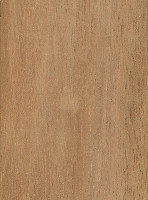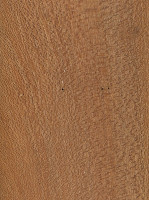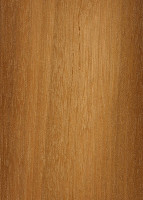The wood name Lauan is a loose term that applies to a number of wood species coming from southeast Asia. Another common name for this wood is Meranti: while the name Lauan is commonly used when referring to plywood made of this type of wood. (It’s also frequently called Philippine Mahogany, though Meranti/Lauan bears no relation to what is considered to be “true” mahogany in the Swietenia and Khaya genera.)
Scientifically, the name Lauan has been used to encompass most commercial lumber found in the Shorea genus, where it is very commonly used in it’s native southeast Asia. There is an abundance of variety between the difference species: each with different working properties, appearances, and mechanical strength values.
The five main groupings for Meranti (Lauan) are: Light Red Meranti, Dark Red Meranti, White Meranti, Yellow Meranti, and Balau.
 |
 |
 |
 |
 |




Working on a purple martin house. Got some really old lauan from a spring cleaning session at a woodworking warehouse. I was confused when I first got it. It feels hard like maybe a red oak, thr grain is definitely mahogany, but its weight feels light like cedar pickets.
so that looks like solid wood–and it’s Luan–was Luan used alot like this-I recovered some wood and am trying to Identify it-it looks like Luan it definately has that mahogany type pore but I thought luan was only used as ply
Could you possibly tell me what species this mahogany door is?
2 of 2
Thanks again Eric
OK, let’s try this again. I think the previous file size was too large.
1 of 2
Yes, I don’t really see any marginal parenchyma, so that probably rules out Swietenia (true mahogany). Did the seller tell you what geographical region it came from? I can’t quite put my finger on it, but the weird coloring going from the sapwood to heartwood also does remind me of some pieces of Shorea species that I’ve seen.
I was told it was recovered from Grays Harbor (aka Walupa Bay), western Washington. I believe (certainly not 100%) the Teredo clam is rather specific to the Pacific northwest. Beyond that, there is no heritage. Doing some general research, a lot of Asian hardwoods were imported through Walupa Bay over the decades. As for the coloring, when sanded it fades readily, but darkens to the pinkish-orange. When purchased, the color was not apparent, except when exposed with a small hand plane. I am certain I over paid, but it was JUST what we were looking for for a live edge… Read more »
Purchased these slabs a little while back. It was called reclaimed submerged mahogany. You can readily see the teredo clam trails. The slabs have been flattened and sanded, although still working on the edges. I’m nearly certain these slabs are not a true mahogany. Leaning heavily towards red memento or luaun. After cruising your website it is clear there is a wide variety under this species. Wondering if you might take a stab at narrowing it down for me. Thanks.
Pics, didn’t come through, can you retry? Also, seeing the endgrain would be most helpful.
how do you treat shorea wood on an outside bench it is new and looks dark like cherry and is a little oily
it is made by belham for hayseed patio furniture
My company uses Lauan in veneer, and it becomes extremely strong and water resistant with our manufacturing process. Lauan gives our furniture and panels a beautiful natural finish. I recommend Lauan for use with structural adhesive and torsion box honeycomb panels.